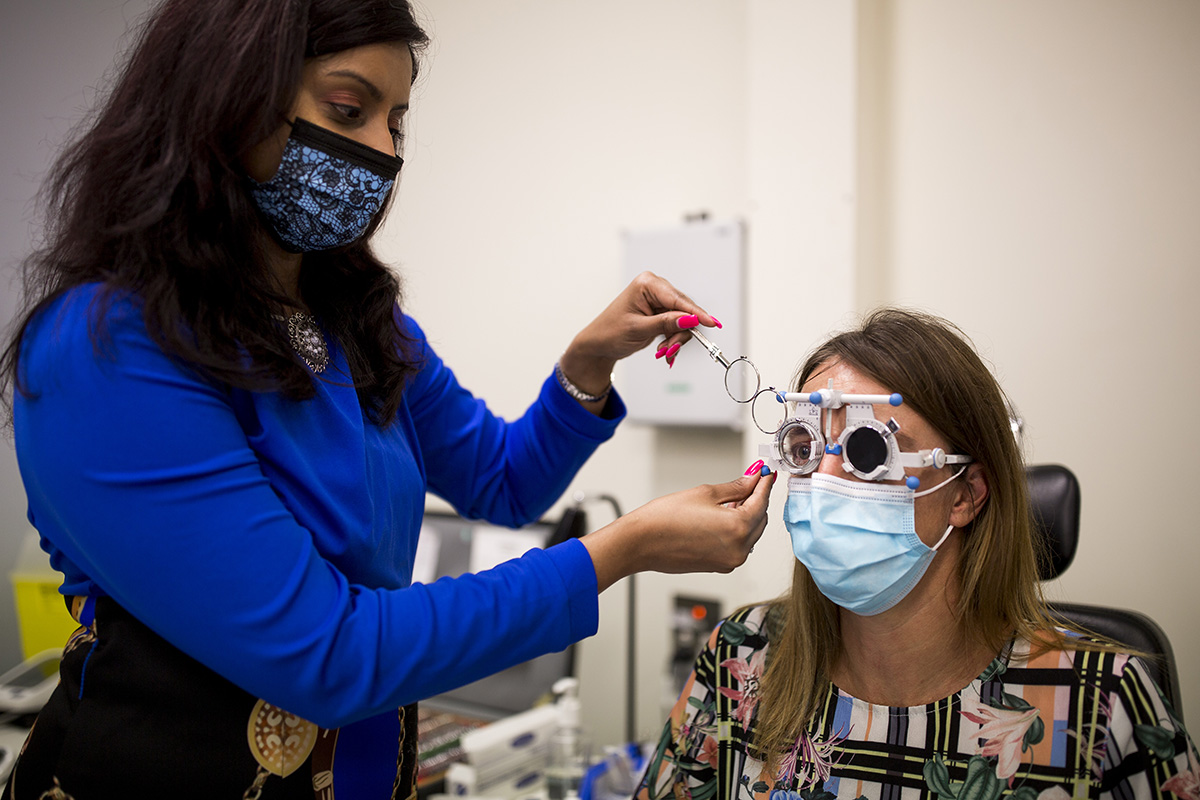This website uses cookies so that we can provide you with the best user experience possible. Cookie information is stored in your browser and performs functions such as recognising you when you return to our website and helping our team to understand which sections of the website you find most interesting and useful.
Research
What’s the rub with keratoconus?
Itchy eyes can be caused by many different things, but rubbing them for relief can be linked to keratoconus.
Rubbing your eyes is often dismissed as a harmless way to relieve an itch, but for World Keratoconus Day, 10 November 2022, consider a different kind of relief.
Recent studies undertaken at CERA have identified an association between eye-rubbing and keratoconus – an eye condition of the cornea that affects many children and young adults.
“The cornea is the structure on the front of the eye, which acts like a window,” says Dr Srujana Sahebjada, Senior Research Fellow of Corneal Research at CERA.
In keratoconus, the normally spherical cornea gets thinner and develops a cone-like shape.
“As keratoconus progresses, the cornea becomes cloudy and doesn’t allow the light inside,” says Dr Sahebjada.
This can cause blurry vision, double vision, astigmatism, short sightedness or light sensitivity and – if left untreated – corneal transplantation is required to restore vision.
Many factors can cause keratoconus, but the most important are genetics and eye-rubbing.
There have been many international studies to determine if eye rubbing is the prime cause of keratoconus, and Dr Sahebjada and her colleagues systematically reviewed these studies in a recently published paper.
“We can clearly say there is an association between eye rubbing and keratoconus, but just how it affects or causes it is unknown,” says Dr Sahebjada.
Avoid eye rubbing
Dr Sahebjada says there is always a fundamental reason people rub their eyes, whether that’s due to allergies or general tiredness.
Rather than simply telling people to avoid rubbing their eyes, Dr Sahebjada suggests over-the-counter artificial tears to keep eyes hydrated and prevent itching.
“Steroid eye drops can prevent itchy eyes for chronic eye rubbers like allergy sufferers – but please consult with your doctor or optometrist about which drops are right for you.
“Remember, excessive eye rubbing – whether due to chronic dryness, itchiness or merely habit – should be addressed to avoid potential unpleasant consequences.”

Get regular eye tests
Another recently published study by Dr Sahebjada and team found an association with inflammatory conditions like asthma, hay fever and eczema – which all have symptoms of itchy eyes.
“If you or your child have any of these conditions, it’s worth getting your eyes tested for keratoconus.”
While there are no symptoms in the early stages of keratoconus, Dr Sahebjada says adults should get their eyes tested at least once every two years
“Children over four should get tested annually whether you believe they have a condition or not.”
Dr Sahebjada says keratoconus can be mistaken for shortsightedness: “If your child frequently needs new glasses – and still complains of blurred vision – that is a trigger to be clinically checked for signs of keratoconus.”
World-class keratoconus research
“At CERA, we work on all the aspects of keratoconus, which is unique,” says Dr Sahebjada.
Dr Sahebjada and her CERA colleagues established the Australian Study of Keratoconus (ASK) to investigate potential causes, determine ways of early detection to prevent the need for major procedures such as corneal transplantation.
The ASK team are running several projects, including an eye rubbing questionnaire that will assess the potential link to keratoconus.
If you’d like to know more or get involved, please visit the ASK webpage.

